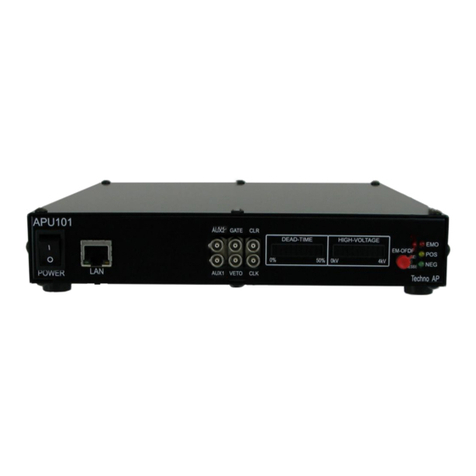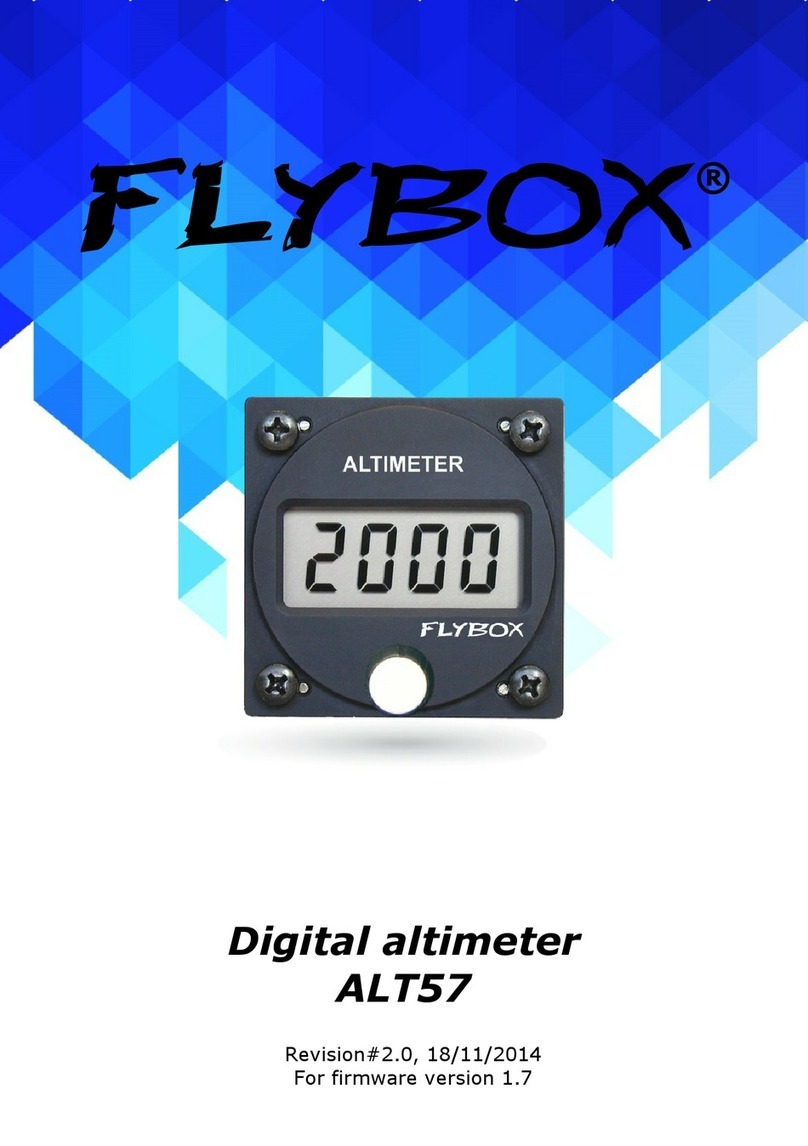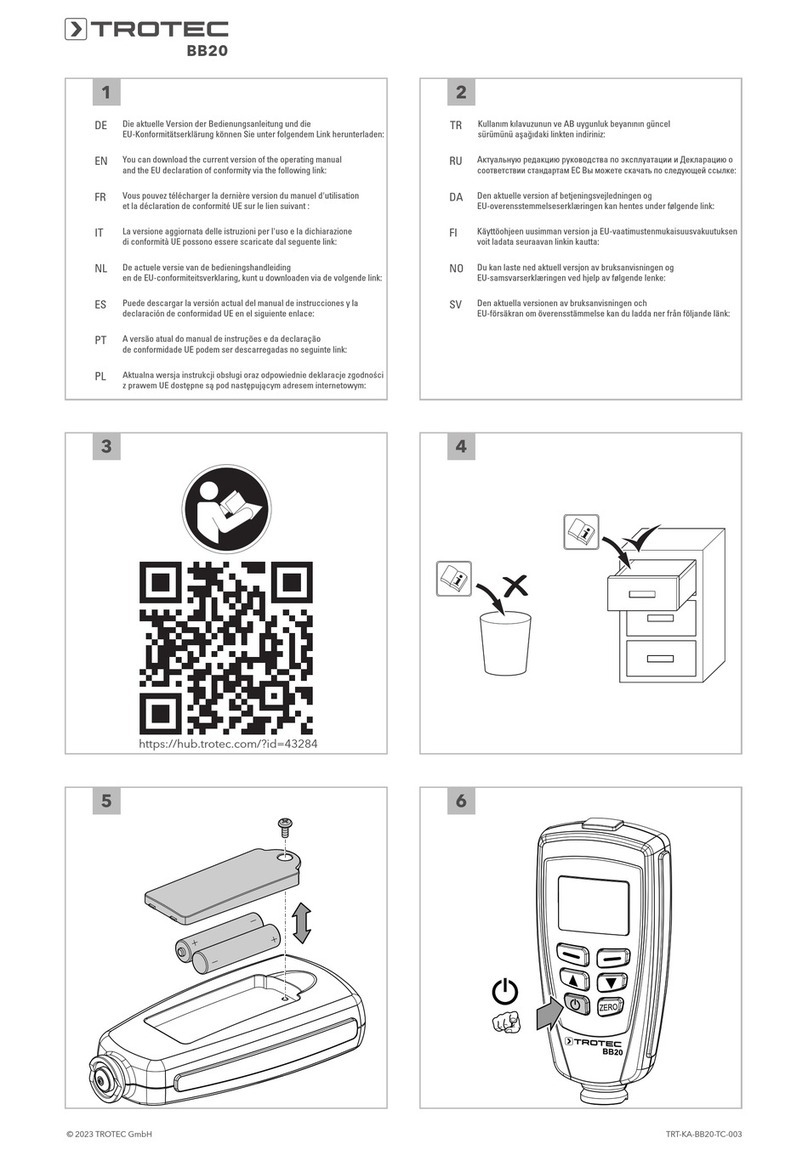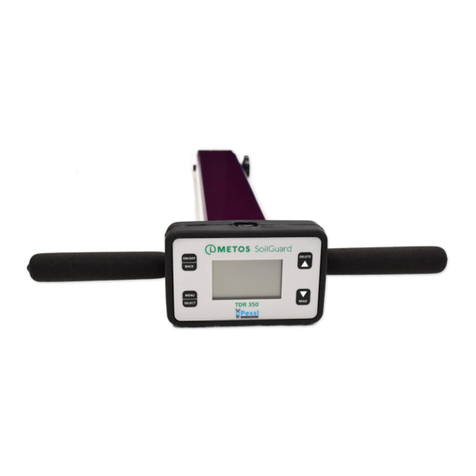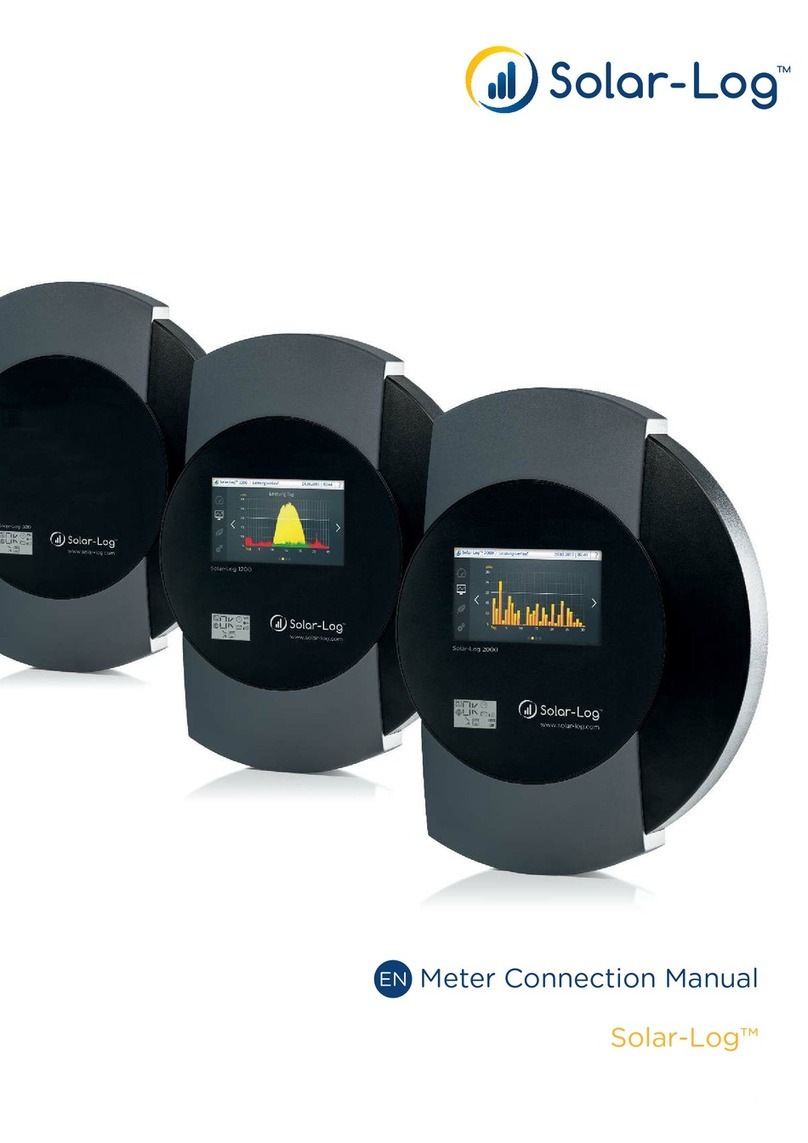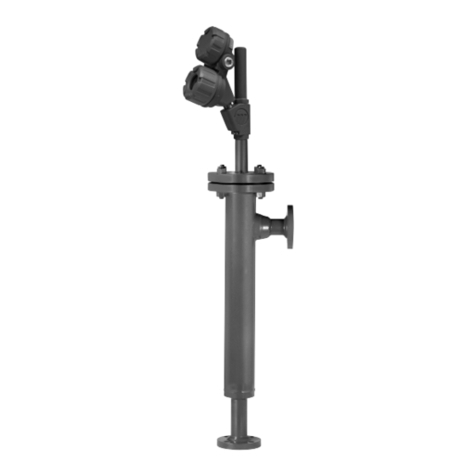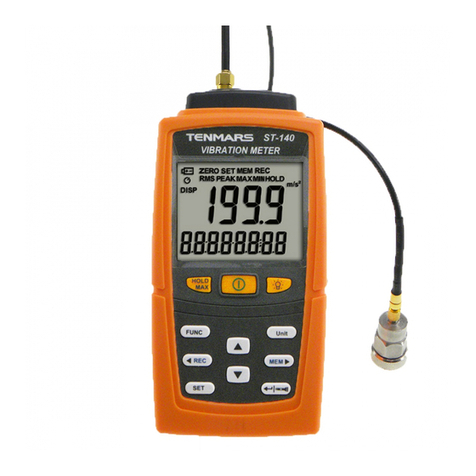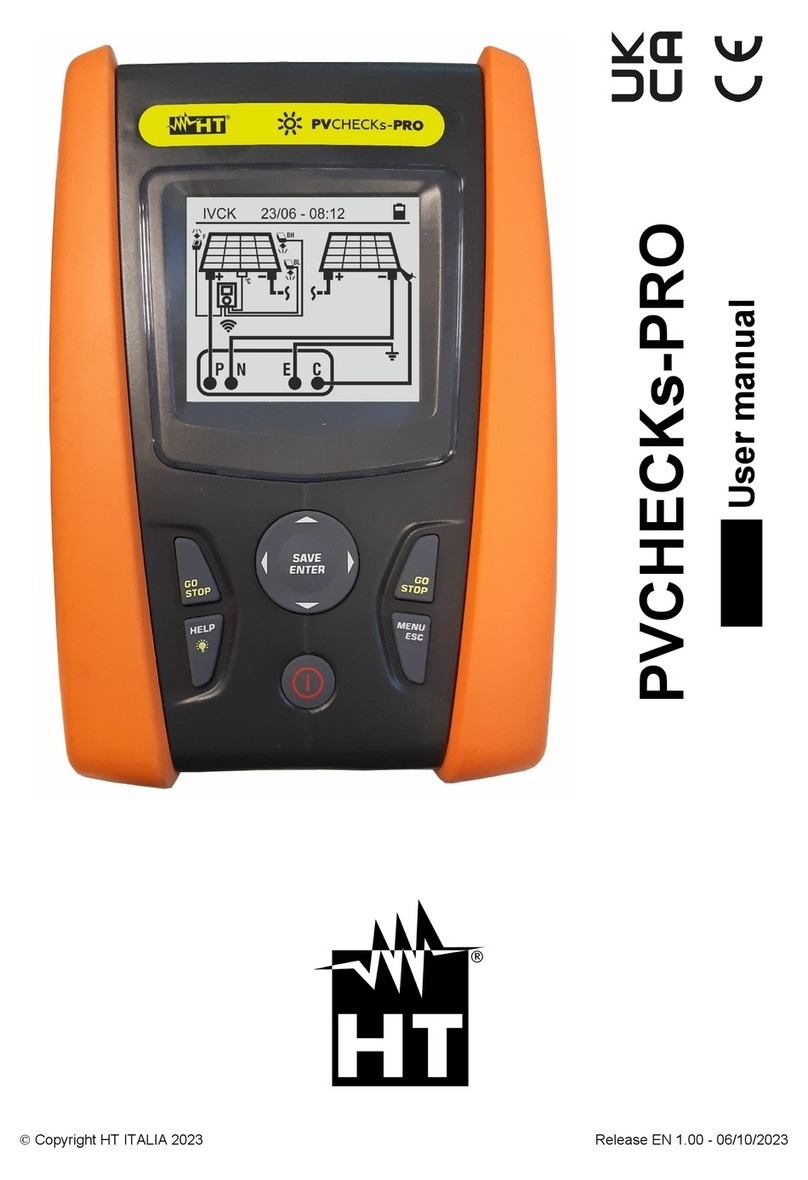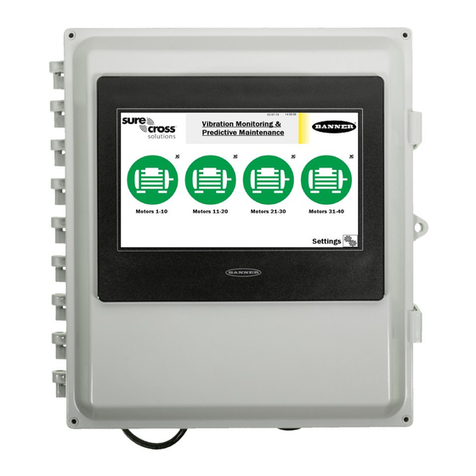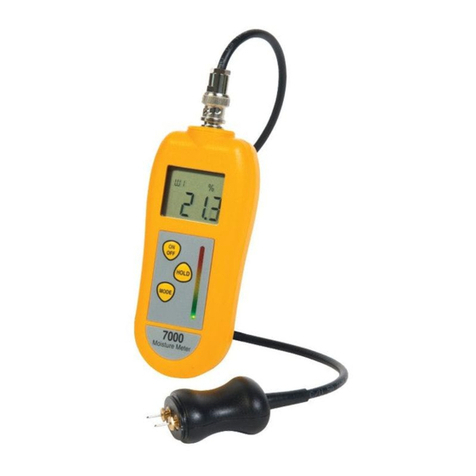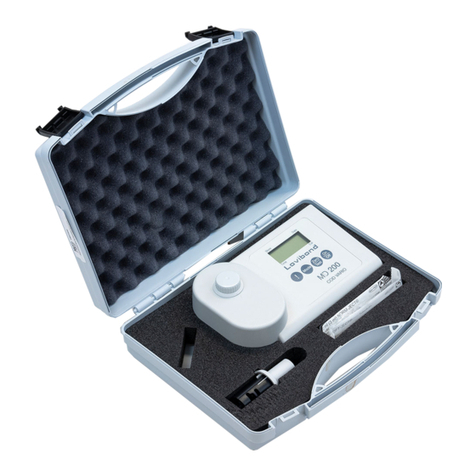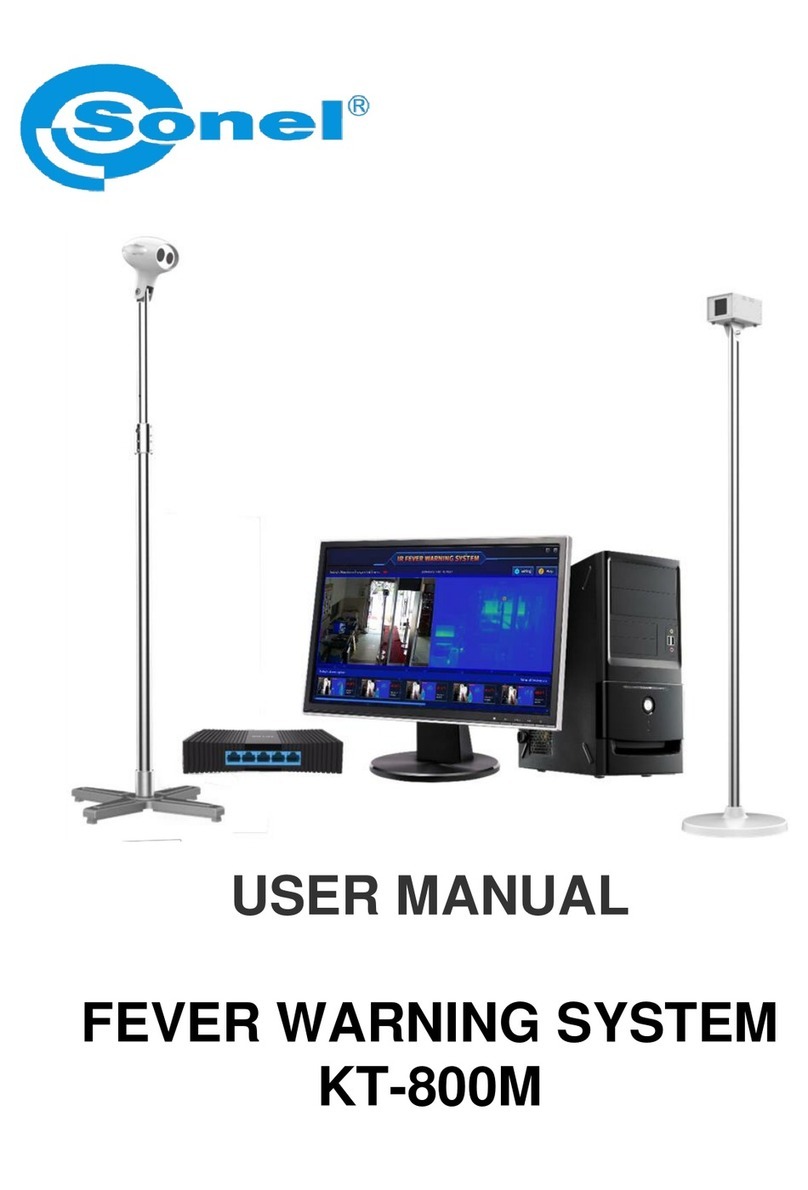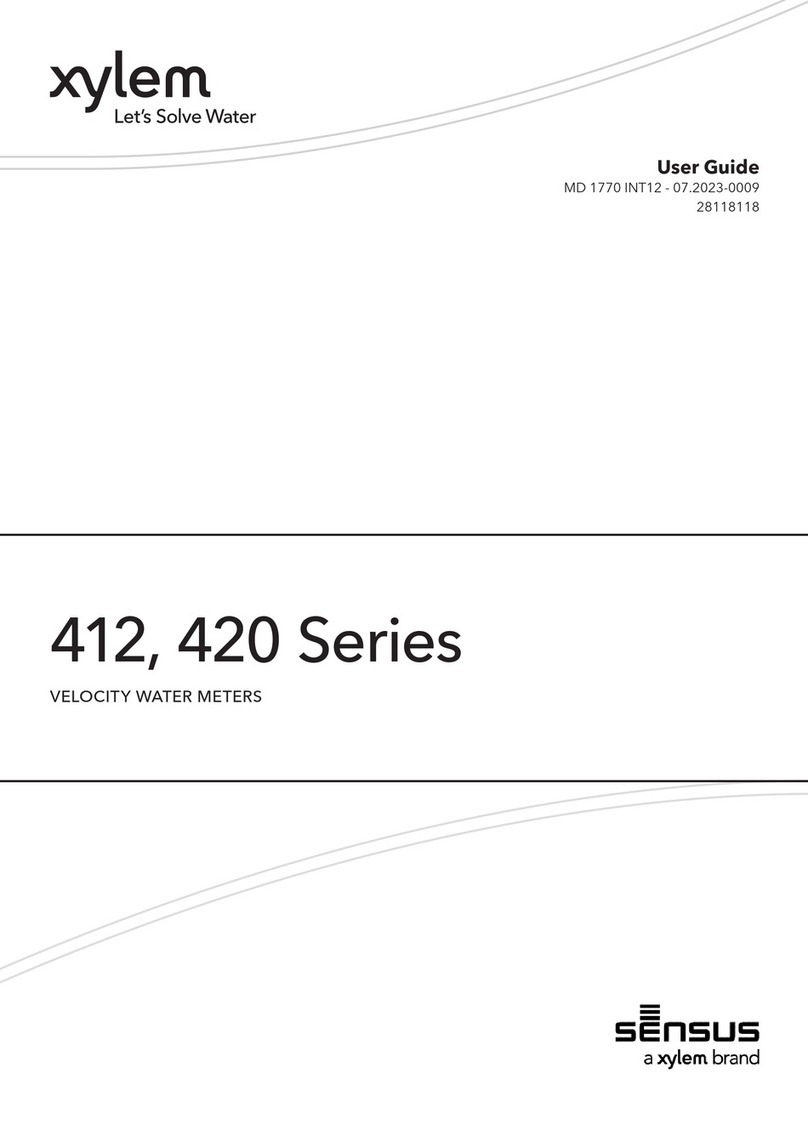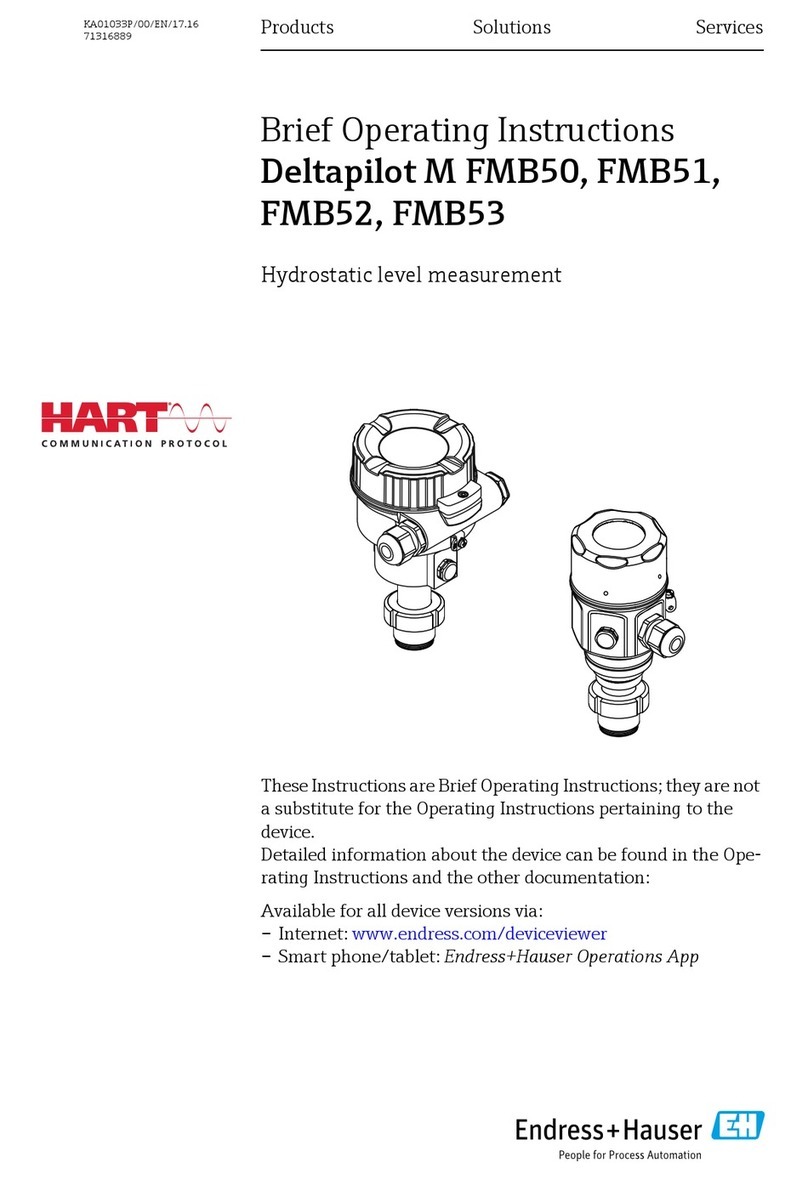TechnoAP APV8516-14 User manual

Digitizer
Model: APV8516-14
Instruction Manual
1.0.1 Edition
March 2020
TechnoAP Co., Ltd.
2976-15 Mawatari, Hitachinaka-shi, Ibaraki 312-0012, Japan
TEL. +81-29-350-8011 FAX. +81-29-352-9013
http://www.techno-ap.com

Edition 1.0.1 March / 2020
2/42
TechnoAP Co., Ltd.

Edition 1.0.1 March / 2020
3/42
TechnoAP Co., Ltd.
Safety Precautions / Disclaimer
Thank you very much for purchasing the Digital Pulse Processor, Model: APV8102-14MWPSAGb (hereinafter ”This
board”) Please read this "Safety Precautions / Disclaimer" before using this board, be sure to observe the contents,
and use it correctly.
We are not responsible for any damage caused by abnormality of board, detector, connected devices, applications,
damages to failure, other secondary damages, even if accident caused by using this board.
Prohibited matter
◼This device cannot be used for applications requiring special quality and reliability
related to human life, accident.
◼This device cannot be used in places with high temperature, high humidity and high
vibration.
◼Do not apply strong shock or vibration to this device.
◼Do not disassemble or modify this device.
◼Do not wet this device with water or condensation. Do not operate this device with
wet hands.
◼If there is heat generation, deformation, discoloration, odor, etc. in this device, stop
using it immediately and contact us.
Caution
◼Use this device at room temperature in the operating temperature range and use it
so that there is no condensation.
◼If there is smoking or abnormal heat generation in this device, turn off the power
immediately.
◼Be careful of static electricity because this device is a precision electronic device.
◼Do not store this device in a dusty place or high temperature / high humidity place.
◼Do not place devices that emit strong electromagnetic waves, such as mobile
phones and transceivers, close to this device.
◼This device may malfunction in environments with high electrical noise.
◼The specifications of this device and related documents may be subject to change
without prior notice.

Edition 1.0.1 March / 2020
4/42
TechnoAP Co., Ltd.
Guarantee conditions
The warranty conditions of "our products" are as follows.
Warranty period
One year from date of purchase.
Guarantee contents
Repair or replacement will be carried out in case of breakdown even though you have
used correctly according to this instruction manual within the warranty period
Out of warranty
We do not warranty if the cause of the failure falls under any of the following.
1. Failure or damage due to misuse or improper repair or modification or disassembly.
2. Failure and damage due to falling etc.
3. Breakdown / damage in harsh environments (high temperature / high humidity,
under zero, condensation etc.).
4. Causes other than the above, other than "our products".
5. Consumables.
6. Natural disasters such as fire, earthquake, flood damage, lightning, etc. and
breakdown due to theft.
7. When the cause of the malfunction is found to be wet
* Even during the warranty period, costs may be incurred for repair or replacement. Please read the contents of
"Safety Instruction and disclaimer" carefully and use it correctly.

Edition 1.0.1 March / 2020
5/42
TechnoAP Co., Ltd.
1. Abstracts.............................................................................................................................................6
1.1. Specification........................................................................................................................................ 7
1.2. Operation System Requirements............................................................................................ 7
1.3. Revision History................................................................................................................................ 7
2. External...............................................................................................................................................8
3. Preparation........................................................................................................................................9
3.1. Display.................................................................................................................................................... 9
3.2. Installation of the application...................................................................................................... 9
3.3. Power ON and IP Connection Confirmation...................................................................... 9
3.4. Connection........................................................................................................................................... 11
3.5. Setting of FAST filter....................................................................................................................... 13
3.6. Setting of SLOW filter..................................................................................................................... 14
3.7. Setting of Threshold........................................................................................................................ 14
4. Window................................................................................................................................................16
4.1. Startup window.................................................................................................................................. 16
4.2. Config Tab............................................................................................................................................. 18
4.3. File Tab................................................................................................................................................... 25
4.4. Status Tab............................................................................................................................................. 26
4.5. Wave Tab.............................................................................................................................................. 27
4.6. Spectrum Tab...................................................................................................................................... 29
5. File......................................................................................................................................................... 30
5.1. Histogram Data File........................................................................................................................ 30
5.2. Wave Data File................................................................................................................................... 32
5.3. List Data File....................................................................................................................................... 33
6. Measurement................................................................................................................................... 35
6.1. Measurement of energy spectrum in histo mode ....................................................... 35
6.2. List measurement .................................................................................................................... 39
Contents

Edition 1.0.1 March / 2020
6/42
TechnoAP Co., Ltd.
1. Abstracts
The APV8516-14 is a waveform analysis board for scintillation detectors. Each channel (16 CH.) is equipped with
high-speed, high resolutionADC (500 MHz, 14-bit). The APV8516-14 can correspond to the high rates of more than
200 kcps per CH. in the list mode with using the Gigabit Ethernet (Gb Ether) connection.
Structure
*In this instruction manual, “List” and “Event” are equivalences.
*In this instruction manual, “Histogram” and “Spectrum”are equivalences.
APV
8516-14

Edition 1.0.1 March / 2020
7/42
TechnoAP Co., Ltd.
1.1. Specification
1. Analog Input
-Number of Channel: 16 CH.
-Input Range: ±1 V
-Input Impedance: 50 Ω
2. ADC
-Sampling Frequency: 500 MHz
-Resolution: 14-bit
-SNR: 68.3dBFS@605 MHz
3. Performance
-QDC Throughput: More than 1 Mcps
-Time Resolution: 7.8 ps (LSB)
4. MCA
-Measurement Mode: Wave Mode, Histogram Mode, List Mode
-Event Transmission Rate: Approx. 10 Mbyte / sec.
In case of 10 Byte (80 Bit) / Event, CH. total is 1 Mcps.
5. Communication I / F
-LAN I/F: Ethernet TCP / IP 1000 Base-T (List data acquisition), UDP/IP (config data, states data sent /
received)
6. Form
-VME type: VME1U, 20mm (W) x 262mm (H) x 187mm (D), About 460g
7. Wattage
+5V: 6.0 A (Max.)
+12V: 0.8 A (Max.)
-12V: 0.4 A (Max.)
1.2. Operation System Requirements
・Microsoft Windows 7 or later
1.3. Revision History
Edition
Conteint
Date
1.0.0
First Edition
10 December 2019
1.0.1
Second Edition
4 March 2020

Edition 1.0.1 March / 2020
8/42
TechnoAP Co., Ltd.
2. External
No.
Name
Contents
1
LED
P: Power ON
V: Not used
E: Not used.
2
CH1 to CH16
LEMO connector for signal input.
Input range: ± 1V, input impedance: 50Ω.
3
SYNC-O
LEMO connector for synchronous timing signal output.
Outputs a timing signal for adjusting the time between boards.
4
SYNC-I
LEMO connector for synchronous timing signal input.
Input a timing signal to adjust the time between boards.
5
CLK-O
LEMO connector for external clock signal output.
Outputs a 25MHz TTL signal.
6
CLK-I
LEMO connector for external clock signal input.
It can be operated using an external clock.
Turn on the power after inputting the 25MHz TTL signal.
7
VETO
LEMO connector for external VETO signal input.
Disable data acquisition during “High”.
8
GATE
LEMO connector for external GATE signal input.
Input TTL signal.
Enables data acquisition while the input is “High”.
9
LAN
RJ45 connector for Ethernet cable.
1000Base-T.
Note: Use the SYNC-O and SYNC-I interconnected with a cable.
(1)
(2)
(3)
(4)
(6)
(5)
(7)
(9)
(8)

Edition 1.0.1 March / 2020
9/42
TechnoAP Co., Ltd.
3. Preparation
3.1. Display
Recommended monitor resolution is more than FullHD (1920 x 1080)
3.2. Installation of the application
The application forAPV8516-14 (hereinafter this application) runs on Windows. To use this software, it is necessary
to install the EXE (executable file) of this application and the LabVIEW Runtime Engine of National Instruments on
the PC used for measurement.
Installation of this application is performed by the installer included in the attached CD. The installer includes an
EXE (executable) file and the LabVIEW Run-Time Engine, which can be installed at the same time.
The installation procedure is as follows.
1. Log in to Windows with administrator authority.
2. Execute “Setup.exe” in the “Installer” folder on the attached CD-ROM. Proceed with the installation interactively.
The default installation destination is “C: ¥ TechnoAP”.
3. Execute "Start Button"-"TechnoAP"-"APV8516-14".
To uninstall, select "APV8516-14" from "Add or Remove Programs" and delete it.
Recommended computer specifications are follows,
Microsoft Corp. Windows 7 32-bit or later
Recommended screen resolution: FullHD (1920 x 1080) or more.
3.3. Power ON and IP Connection Confirmation
1. Confirm power on the PC and Switching Hub, and ON the VME power switch.
2. Please wait about 30 seconds
3. Execute the ping command at the Windows command prompt to check whether the device and the PC can be
connected. Start the windows application “cmd.exe”. The IP address of this device shows on the board. The
defalt of these boards is as follows.
“ping 192.168.10.128”
“ping 192.168.10.129”
“ping 192.168.10.130”

Edition 1.0.1 March / 2020
10/42
TechnoAP Co., Ltd.
*Screen when communication settings are CORRECT
*Screen when communication settings are INCORRECT

Edition 1.0.1 March / 2020
11/42
TechnoAP Co., Ltd.
1. Start application “APV8516-14”
When starting this application, an error message indicating that connection with the device failed may be
displayed.
Possible causes are:
1. The port definition in the "System" section of the configuration file "config.ini" has an incorrect value.
2. The LAN cable on the PC is not inserted properly.
3. The LAN cable on the device is not properly inserted.
4. The power of this device remains OFF or the LAN cable is disconnected.
5. The network setting on the PC is set to DHCP.
6. IP address of TCP/IPv4 is not the range ”192.168.10.2” to “192.168.10.255”.
7. The power saving mode of the PC is working.
8. The PC's wireless LAN is enabled.
If the above does not work, try the following:
After checking the cable connection, restart this application.
3.4. Connection
Please check the IP address each board.
Place of IP address

Edition 1.0.1 March / 2020
12/42
TechnoAP Co., Ltd.
LEFT: 192.168.10.128 CENTER: 192.168.10.129 and RIGHT: 192.168.10.130
Each clock-IO and sync-IO must be connected as follow.
Clock out of IP 130 module connect to clock input both IP 128 and IP 129 module.
Sync out of IP 130 module connect to sync input of all module.
Please be careful of there is two type cables.

Edition 1.0.1 March / 2020
13/42
TechnoAP Co., Ltd.
3.5. Setting of FAST filter
This board has a FAST filter to obtain time information of waveform acquisition and a SLOW filter to acquire energy
(wave height).
First, set the FAST filter. The setting has the same characteristics as a general timing filter amplifier.
FAST filter (fast diff 50, fast integral 50)
1. DAC output setting
Connect the DAC output signal to the oscilloscope, select “DAC monitor CH” to the corresponding channel, and set
“DAC monitor type” to “fast”.
Prepare the FAST filter signal from the DAC output of the DSP using an oscilloscope.
2. Constant setting of the FAST system differential circuit
Set the constant of the FAST differential circuit in "fast diff". Select from "ext", "20", "50", "100", "200".
3. Constant setting of FAST system integration circuit
Set the constant of the FAST system integration circuit with "fast integral". Select from "ext", "20", "50", "100", "200".
4. FAST pole zero setting
Adjust the pole zero with “fast pole zero”. The default value is 0. Make settings on the oscilloscope as shown below.
Adjustment is required every time "fast diff" or "fast integral" is changed, but it is not necessary to set as strictly as
SLOW pole zero described later.
Before “fast polezero”adjustment After “fast polezero”adjustment
5. Reference settings
The settings for "fast diff" and "fast integral" differ depending on the detector and signal conditions.
The following is a rough reference example.
Detector
Features
fast diff
fast integral
LaBr3
Rising time fast
20
Ext or 20
HPGe
High resolution
100
100

Edition 1.0.1 March / 2020
14/42
TechnoAP Co., Ltd.
3.6. Setting of SLOW filter
Set the SLOW filter to acquire energy (wave height).
1. DAC output setting
Connect the DAC output signal to the oscilloscope, select “DAC monitor CH” to the corresponding channel, and set
“DAC monitor type” to “slow”.
Prepare the oscilloscope so that the SLOW filter signal can be seen from the DSP DAC output.
2. SLOW rise time setting
To set the same conditions as when the time constant of the linear amplifier is 6 μs, set 12000 ns. This value affects
the energy resolution. Setting a shorter value enables higher counting but reduces the resolution. Conversely, if it is
too long, counting may not be possible. The recommended value is 6000ns.
3. SLOW flat top time setting
Set the value of the preamplifier to 0 to 100% of the rise time, twice the value of the slowest rise.
4. SLOW system pole zero setting
The default value is 680, but it depends on the detector, so set it to the optimal value with an oscilloscope.
Before adjustment (with undershoot) After adjustment
3.7. Setting of Threshold
The setting of the threshold affects the following three.
1. Threshold of FAST filter. Time stamping as the leading-edge timing (LET) is performed when this threshold is
exceeded.
2. Used as a threshold for gated baseline restorer (BLR).
3. Used as the pile-up rejector threshold. Set this value to the lowest value that can be distinguished from noise
when connected to the detector. The default value is 25.
There are two types, "fast trigger threshold" and "threshold".
"Fast trigger threshold" is the threshold for detecting signals from FAST filters.
"Threshold" is a threshold for identifying signals from slow filters.
"AUTOMATIC setting"
Set "0" to set the threshold automatically.
"MANUAL setting"

Edition 1.0.1 March / 2020
15/42
TechnoAP Co., Ltd.
In the manual setting of the threshold, first input a somewhat large value other than 0 (about 100) and observe the
Input Rate. Find a value that gradually reduces the threshold and increases the Input Rate. Since that value is the
boundary between signal and noise, set it to about +3 to +10.

Edition 1.0.1 March / 2020
16/42
TechnoAP Co., Ltd.
4. Window
4.1. Startup window
The following opening screen is displayed when you carry out “Start”-“TechnoAP”-“APV8516-14”.
Fig. 4-1-1 Start window
Menu bar section
It is configured "File", “Edit”, “calibration”, “Config”, "Clear", "Start", and "Stop".
File
open config
Reading the configuration file
save config
Save the current settings to a file
save histogram
Save current histogram data to a file
save wave
Save the wave data
save image
Save this device screen as PNG format image
quit
Application termination
Edit
copy setting of CH1
Setting of CH1 in the “CH”tab is reflected by setting of all other CH
IP configuration
Change IP address of current display device
calibration
Calibrate the device when wave data is errow.
calibration
Config
Apply all setting to each module
Clear
Initialization of histogram data in each module
Start
Send “Measurement start” to each module
Stop
Send “Measurement stop” to each module

Edition 1.0.1 March / 2020
17/42
TechnoAP Co., Ltd.
Tab section
It is configured “config”, “file”, “state”, “wave”, “spectrum”and “timespectrum”
config
Each module setting and Setting about the measurement
file
Setting of waveforms and save of list data
state
Display state of each ch.
wave
Display of input waveform, when processer is DPP, Display waveform is RAW, CFD,
QDC waveform. When processer is DSP, Display waveform is preamp, fast, cfd,
slow waveform.
spectrum
Display of histogram from QDC or PEAK of list data
timespectrum
Display a time lag spectrum of CH1 and CH2 from time information of list data.
Device
Choose the DPP for targeted measurement.
IPAddress
IP address. IP address of the selected device will be display
memo
You can enter notes
mode
You can select next mode. wave mode, hist mode, list mode
list read byte
When list mode, list data be saved per this parameter.
mode
It displays your setting mode.
measurement time
It displays your setting measurement time.
real time
It displays state of real time.
live time
It displays state of live time.
file Size (Byte)
It is a capacity of the list mode saved current file
sampling
DPP is 500 MHz. DSP is 62.5 MHz.
acq. LED
Blinking LED when during measurement.
error LED
Blinking LED when during occurrence of an error.

Edition 1.0.1 March / 2020
18/42
TechnoAP Co., Ltd.
4.2. Config Tab
Fig. 4-2-1 Config Tab
Common setteing
Enable
Please enable all CH
processe type
You can select DSP or DPP. DSP sampling rate is 62.5MHz. Main measurement purpose is
Semiconductor detector. Energy data generate from peak of trapezoidal filter. DPP
sampling rate is 500 MHz. Main measurement purpose is direct anode signal from
scintillator. Energy data generate from integral of raw wave or filter wave
Polarity
This select the polarity of the input signal.
LLD
Set the Lower Level Discriminator (LLD). It does not get the time stamp data and energe
data if the energy data smaller than LLD. Please set LLD smaller than ULD. Range is 0
from 8191 digit.
ULD
Set the Upper Level Discriminator (ULD). It does not get the time stamp data and energy
data if the energy data greater than ULD. Range is 0 from 8191 digit.

Edition 1.0.1 March / 2020
19/42
TechnoAP Co., Ltd.
DPP setteing
Fig. 4-2-2 DPP Tab in Config Tab
Baseline Restorer Filter
This set the time constat of the baseline restorer filter. Ext (Auto BLR off), Fast, 4
μs, 85 μs, 129 μs, 260 μs. Nomally set to 85 μs.
Threshold
Set the threshold. Unit is digit. Range is 0 to 8191.
threshold
rise edge
Set above noise
Timing Type
Select the wavefrom for time stamp. You can select the CFD waveform and the
LED (raw) waveform.
LET: Leading Edge Timing
It is the timing that has been reached to trigger. Timestamp timing is different by the signal height.
Fig. 4-2-2 How to use Leading Edge Timing
b
a
b’
a’
t

Edition 1.0.1 March / 2020
20/42
TechnoAP Co., Ltd.
g
h
CFD
CFD: Constant Fraction Disicriminator Timing
Features of CFD wave form is the same even though different wave high.
Input Signal
It is multiplying the input signal and CFD function.
It delay the input signal.
It add the two signal of the above.
Fig. 4-2-3 How to use Constant Fraction Disicriminator Timing
Timestamp timing is the same by CFD wave generation.
c, d: a and b multiplying the input signal and CFD function.
e, f: a and b delay the setting value.
g, h: it sam each wave.
e
f
c
V1 * CFD function
CFD delay
b
a
d
V1
V2
V2 * CFD function
Table of contents
Other TechnoAP Measuring Instrument manuals
